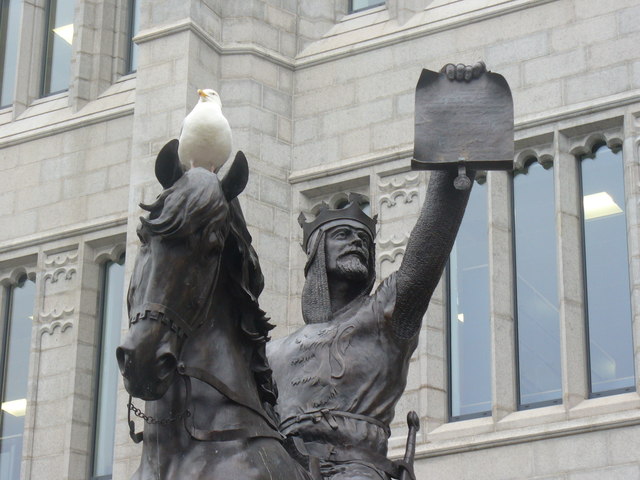
Word of the Day: Regal
Paul Schleifer
Regal is an adjective that means “of or related to a king; royal,” according to www.dictionary.com. Through the process of generalizing, it comes to mean “splendid” or “stately.”
According to www.etymonline.com, the word enters the language in the “late 14c., from Old French regal ‘royal’ (12c.) or directly from Latin regalis ‘royal, kingly; of or belonging to a king, worthy of a king,’ from rex (genitive regis) ‘king.’” The Latin comes from the PIE root *reg- “move in a straight line,” with derivatives meaning “to direct in a straight line,” thus “to lead, rule.”
Today is May 1, what some people call May Day. But I’d like to focus on a couple of historical events from this day.
On this date in 1328, the English Parliament ratified the Treaty of Edinburgh-Northampton, which ended the First Scottish War of Independence. The treaty was signed by Robert the Bruce. It established Scotland’s independence, at least for the new little while.
The war itself was a product of the time of the Great Cause, a period of unrest following the death of King Alexander III in 1286 and his daughter, the heir, in 1290. With no clear heir to the throne, several Scottish families vied for the throne. With civil war threatening, the Scottish nobility asked King Edward I of England to come and mediate—a huge mistake. Edward decided that he rather liked “mediating” in Scotland, so he decided to make it his. What followed was nearly 40 years of fighting between the English and independence-minded Scots.
The fight was continued after the death of Edward I and the succession of his son, Edward II. For any who might be interested, there is a very good history play about Edward II by Shakespeare’s contemporary, Christopher Marlowe. Edward II was deposed and murdered by his wife and her lover in 1327, and shortly after that the Scottish gained the upper hand, leading to the Treaty of Edinburgh-Northampton.
Curiously, on this date in 1707, the Treaty of Union went into effect. This treaty united England and Scotland into one kingdom, called Great Britain. The union of the two countries had actually been effected, non-violently, more than a hundred years earlier, when Elizabeth I chose James VI of Scotland to become James I of England upon her death, which happened in 1603. But the full union happened after “the Darien Scheme, [which] sought to establish a new Scottish colony at the Isthmus of Panama. Many people blamed the scheme for the virtual collapse of Scotland’s economy, which led to the 1707 Treaty of Union between England and Scotland – a union that many Scots did not want
(https://www.historicmysteries.com/darien-scheme/).
More recently, the people of Scotland voted on a referendum about ending the Treaty of Union, but that referendum failed by about 56% to 44%.
So the independence came about in response to a king’s attempt to take over Scotland, and when the Scottish nobility virtually bankrupted the country, another king took advantage of the situation to force a union between the two countries. Gives a new, negative meaning to the word regal, doesn’t it?
The image: “This new statue (2011) has been sited outside Aberdeen’s historic Marischal College which is the new home to the City Council (as of 2011). Robert the Bruce gifted the “Freedom Lands” [Stocket Forest] to the city of Aberdeen, thus ensuring a long lasting wealth. The 18 feet high statue was sculpted by Alan Herriot.”